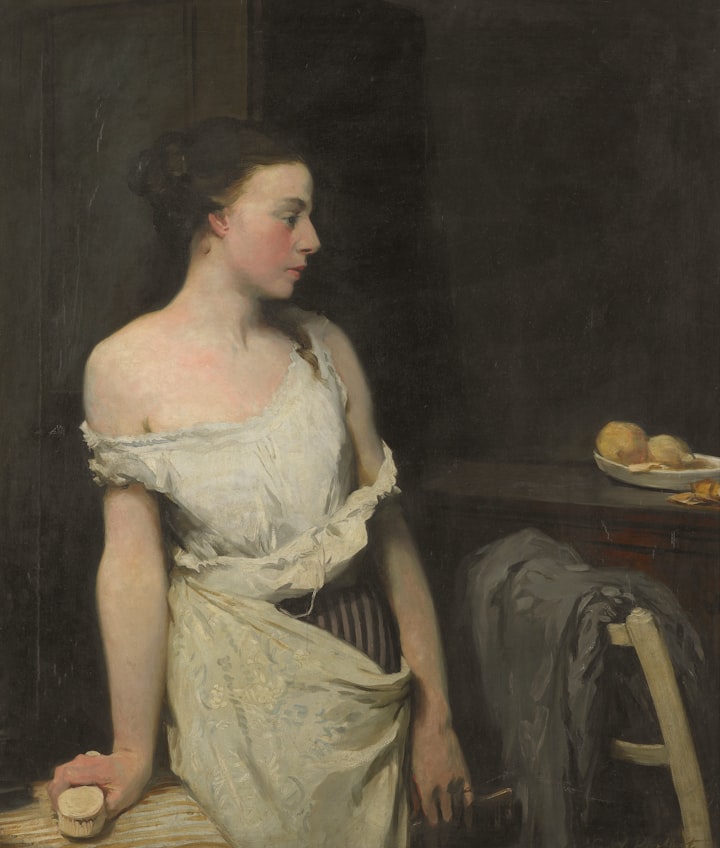
The funny thing is, I doubt my life would be very different at all if I were born in the past. In another era, another place, I think I’d be living my life almost exactly the same as I am now. I’m currently a teacher, writer, and spinster. Yes, at 32 and single, I’m a modern-day old maid with no plans to change that any time soon, to the disgust of men all over the internet.
Unmarried women have always been viewed with suspicion, even contempt. Throughout most of recorded history, a woman’s sole purpose in life was to marry and produce children for the family and the state. In Ancient Rome under Emperor Augustus, women were expected to be married by the age of 20 or they would be punished. Widows were forced by law to remarry within 10 months of their husband’s death. Latin even has a word raptio, meaning the large-scale kidnapping of women for marriage (or sexual slavery). Raptio has been extremely common all over the world, not just ancient Rome, especially during times of war.
During the Medieval period, Britain was, of course, a patriarchal society. Women were subordinate to men, and were considered the property of the male head of the family: first their father, then their husband. Over the years, gender roles became more defined and labour was divided into men’s work (for example, ploughing fields) and women’s work (dairy production). Women had once been the brewers and sellers of ale, but by 1600 this had been taken over by men, and women were left only to serve it in taverns, a low-skilled and poorly-paid job in comparison to brewing.
In the Middle Ages, women were categorised as virgins, wives, or widows. Unmarried adult women didn’t fit into these boxes, and so were often considered prostitutes or witches (or both at the same time) and made to suffer for it. Up until very recently in human history, women were barred from proper education and prohibited from owning property or money, so had no real option other than to get married. In the latter half of the Middle Ages, healthy single women under 50 were even forbidden from renting rooms and houses, forcing them into service or marriage.
The later Middle Ages also saw the establishment and spread of guilds in Britain. Only guild members were allowed to practise their craft and sell their products in the city. And guild membership was restricted to men. One of the only job opportunities available to single women in the Middle Ages was spinning thread and yarn; they became known as spinsters. These were the only women allowed to earn wages, sign contracts and own possessions.
As the centuries passed, the term ‘spinster’ took on a negative connotation, and unmarried women began to be viewed with derision and disdain. Spinsters in popular literature in the 19th century were mocked, belittled, and portrayed as pathetic, bitter and pitiful characters, while newspapermen began to view them as a threat to the social fabric.
A magazine article written in 1862 titled, “What Shall We Do With Our Old Maids?” lamented the fact that 30% of women had never married and argued that “We must do nothing whatever to render celibacy easy or attractive.” It claimed that women choosing to remain single was not “the natural order of Providence.”
From the late 19th century and onwards, single women began to fight back, most clearly with the suffragette movement. By this time, many women were now receiving an education and entering the workforce, and a growing number of women were able to support themselves and live independently. There were an increasing number of female authors and writers who penned dissertations on the status of women. One of America’s most famous essayists of the time, Agnes Repplier (who lived to the age of 95 and never married), wrote a wonderful piece in 1913 in defence of the spinster. One of the most powerful lines from this essay struck me vividly:
“What if, holding her life in her two hands, and knowing it to be her only real possession, she disposes of it in the way that she feels will give her most content, swimming smoothly in the stream of her own nature, and clearly aware that happiness lies in the development of her individual tastes and acquirements?”
So here I am, a 21st century spinster, holding my life in my two hands. If I could transport that life into another era, I would choose the early 1900s. And I would still be a teacher (for my living), a writer (for my enjoyment), and a spinster (for my sanity). I would complete my education, battle my way into a university, and join the protests for women to finally be awarded degrees. I would fight with my suffragette sisters for women to be awarded the vote. I would revel in the history being made and the progress being achieved, and I would read every one of those essays about the status of women. Most of all, I would swim in the stream of my own nature.
*Adapted from my previous Vocal piece: Holding Her Life In Her Two Hands
About the Creator
Jenifer Nim
I’ve got a head full of stories and a hard drive full of photos; I thought it was time to start putting them somewhere.
I haven’t written anything for many, many years. Please be kind! 🙏






Comments
There are no comments for this story
Be the first to respond and start the conversation.